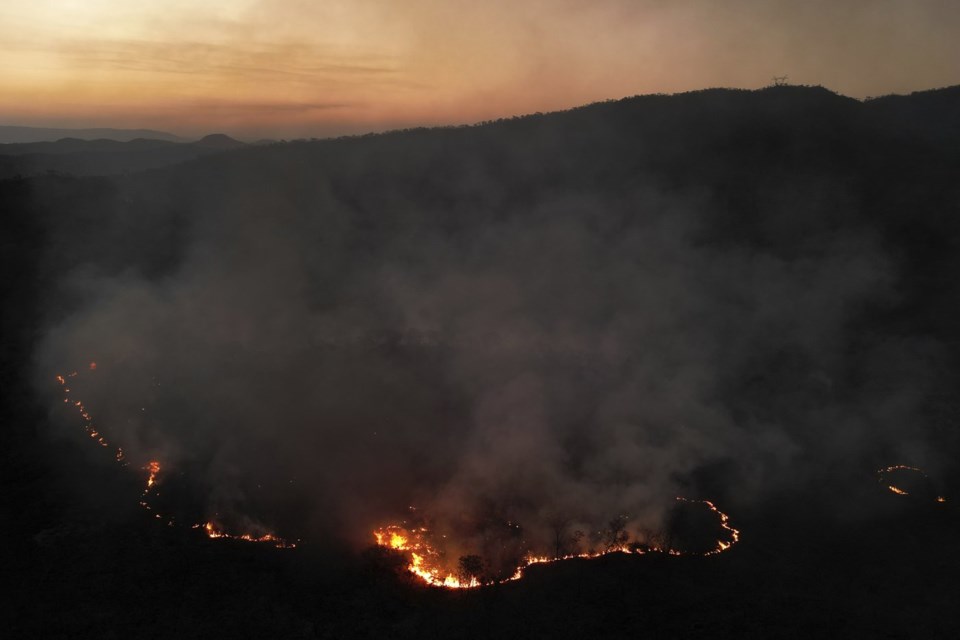BRASILIA, Brazil (AP) — Brazil is enduring its worst drought since nationwide measurements began over seven decades ago, with 59% of the country under stress — an area roughly half the size of the U.S.
Major Amazon basin rivers are registering historic lows, and uncontrolled manmade wildfires have ravaged protected areas and spread smoke over a vast expanse, plummeting air quality.
“This is the first time that a drought has covered all the way from the North to the country's Southeast,” Ana Paula Cunha, a researcher at the National Center for Monitoring and Early Warning of Natural Disasters, said in a statement Thursday. “It is the most intense and widespread drought in history.”
Smoke on Monday afternoon caused Sao Paulo, a metropolitan area of 21 million people, to breathe the second most polluted air in the world after Lahore, Pakistan, according to data gathered by IQAir, a Swiss air technology company.
About 1,100 kilometers (683 miles) to the north, a wildfire is sweeping through Chapada dos Veadeiros National Park, one of Brazil’s most famous tourism sites.
“This year, the dry season started much earlier than in previous years, whereas the rain season was intense yet short,” Nayara Stacheski, head of the park, told The Associated Press. “The wind is strong, the air humidity is very low and it’s extremely hot. All this worsens the wildfire.”
On Monday, there was one uncontrolled wildfire in a remote area. A helicopter was expected to arrive to transport firefighters. Another fire was controlled by 80 firefighters, with support from two aircraft. Two other fires were threatening to enter the park.
The blazes in one of the few protected areas of Cerrado, the Brazilian savanna, are just the latest drama in the country beset by months of blazes. From the beginning of the year until Sept. 8, Brazil registered almost 160,000 fires, the worst year since 2010. In Pantanal, the world’s largest wetland area, it has been the second worst fire year on record.
Most fires are manmade as part of the deforestation process or for clearing pastures and agricultural land. So far this year, an area the size of Italy has burned in Brazil.
Fire is not the only problem. More than 1,900 kilometers (1,200 miles) from Chapada dos Veadeiros to the Northeast, the Amazon — the world’s most voluminous river — and one of its main tributaries, the Madeira River, have registered new daily record lows at the city of Tabatinga. There's no end sight — significant rain is not expected until October.
Low river levels have stranded dozens of communities only accessible by water. One of the largest is Fidadelfia, inhabited by 387 families of the Tikuna tribe. Due to the drought, there is shortage of potable water and children are drinking dirty water, leading to a surge in illnesses. Food is becoming scarce as crops die and it’s increasingly difficult to travel to the city, local leader Myrian Tikuna told the AP.
Tikuna sent a selfie taken Monday in her community. Instead of water, endless banks of sand dominate the landscape.
“This used to be the Amazon River," she said. "Now it’s a desert. If things get worse, our people will disappear. Now we are realizing the severity of climate change.”
___
The Associated Press’ climate and environmental coverage receives financial support from multiple private foundations. AP is solely responsible for all content. Find AP’s standards for working with philanthropies, a list of supporters and funded coverage areas at AP.org.
Fabiano Maisonnave, The Associated Press




